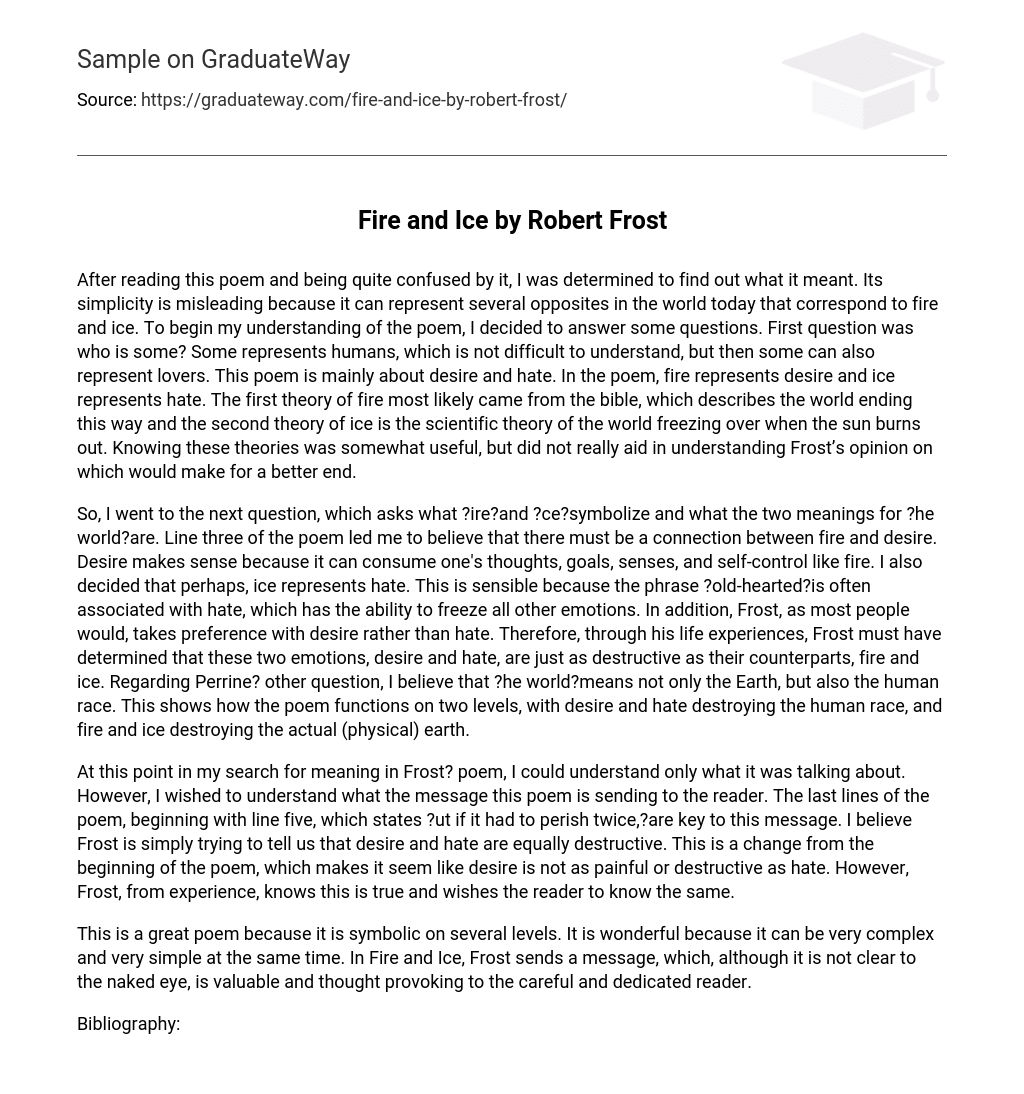After reading this poem and being quite confused by it, I was determined to decipher its meaning. Its deceptive simplicity can symbolize contrasting elements in today’s world, represented by fire and ice. In order to comprehend the poem, I embarked on finding answers to questions. One of the questions pondered who “some” refers to. “Some” can embody humans, a concept easily understood, but it can also denote lovers. This poem primarily explores desire and hate. Fire signifies desire, while ice symbolizes hate. The idea of fire likely draws from biblical references that depict the world’s end, while the concept of ice originates from the scientific theory of the sun burning out and causing the world to freeze over. Familiarity with these theories proved somewhat helpful but did not fully elucidate Frost’s stance on which scenario would constitute a preferable end.
I proceeded to the next question, which inquires about the symbolism of fire and ice, as well as the possible meanings for “the world.” Line three of the poem led me to conclude that there must be a correlation between fire and desire. Desire is logical as it can consume one’s thoughts, goals, senses, and self-control, similar to how fire does. I also speculated that ice represents hate. This is reasonable because the phrase “cold-hearted” is often associated with hate, which has the ability to freeze other emotions. Frost, like most people, favors desire over hate. Therefore, based on his life experiences, Frost must have concluded that these two emotions, desire and hate, are equally destructive like their counterparts, fire and ice. Addressing Perrine’s other question, I believe that “the world” refers not only to the Earth but also to the human race. This demonstrates how the poem operates on two levels: desire and hate destroying humanity and fire and ice destroying the physical Earth.
At this point in my search for meaning in Frost’s poem, I only grasped its subject matter. Nonetheless, I desired to comprehend the underlying message it conveys. The final lines, commencing with line five and proclaiming “but if it had to perish twice,” serve as the essence of this message. In my interpretation, Frost simply aims to communicate the equal destructiveness of desire and hate. This contrasts with the initial tone of the poem, which implies that desire is less painful and detrimental than hate. However, Frost, drawing from personal experience, acknowledges this truth and desires for the reader to grasp it as well.
This poem is remarkable as it contains multiple layers of symbolism. It is both intricate and straightforward, making it truly impressive. In Fire and Ice, Frost conveys a powerful message that may not be apparent at first glance but holds great value and prompts deep contemplation in observant and committed readers.
Bibliography:





